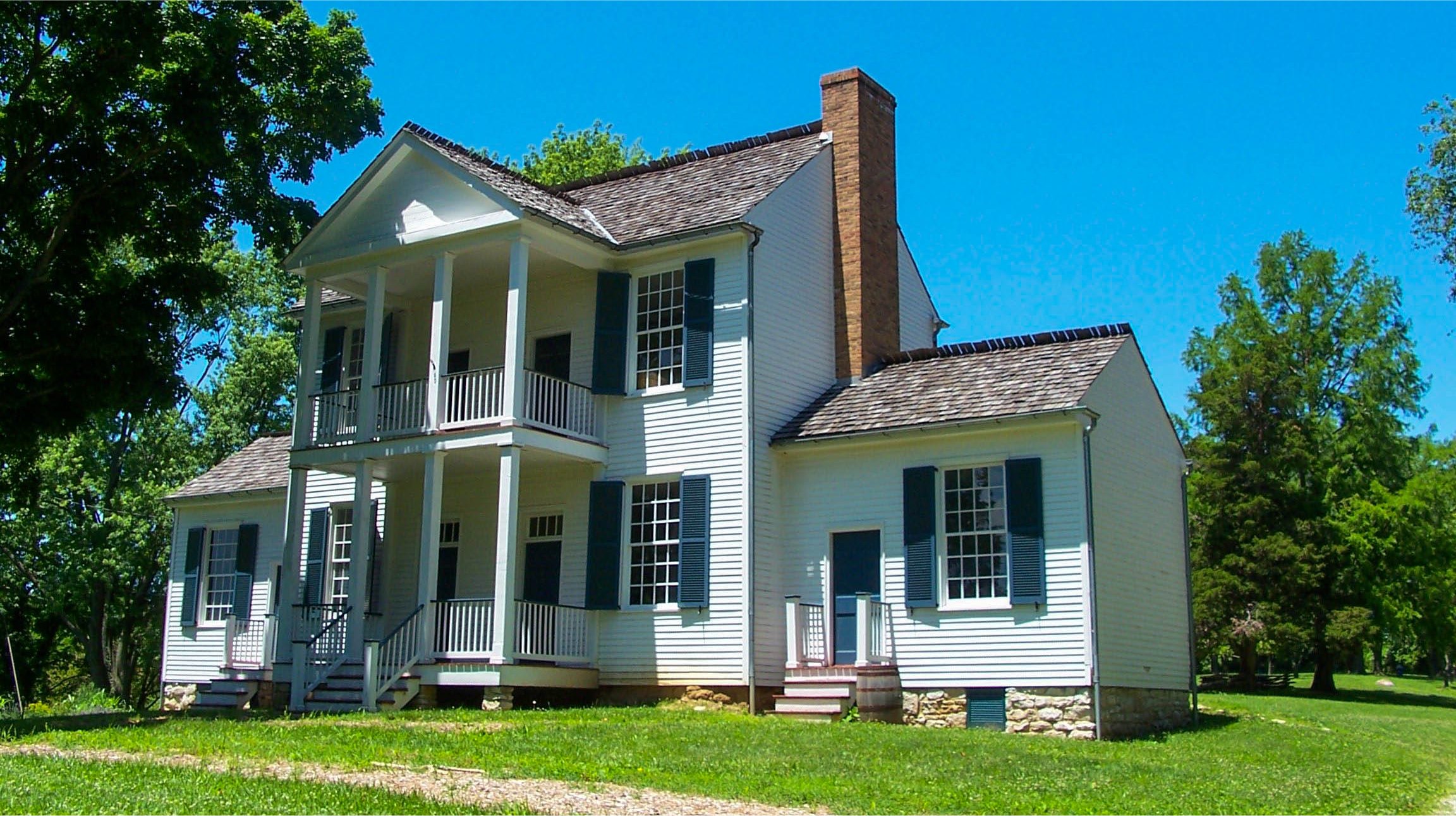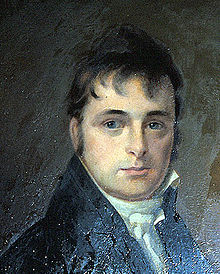15185 Olive Street Road
Chesterfield, Missouri
636-532-7298
Frederick Bates was the fourth of twelve children born to Thomas and Caroline Bates at the family plantation known as “Belmont” in Goochland County, Virginia. He was born during the American Revolution on June 23, 1777. At the age of seventeen he entered the law office of William Miller, the clerk of the county court, and began studying law. In 1797 he received a federal appointment to the quartermaster department of the Army of the Northwest and was stationed at various posts in Michigan and northern Indiana. In 1800 Bates left the quartermaster office and started a mercantile business in Detroit that he ran until a fire destroyed his store in 1805. Bates was a supporter of the Democratic-Republican Party and Jeffersonian politics and his Virginia heritage and family connections were helpful to him. During his time as a merchant Bates also held the posts of deputy postmaster, receiver of federal monies for the Michigan Territory, and associate judge for the territory.Bates moved to Washington, D.C. in 1806 where he solidified his political connections. When former Vice President Aaron Burr’s conspiracy to Aaron Burr's attempt to detach the Western states and the Louisiana Territory from the United States was uncovered President Jefferson began replacing Burr supporters. Jefferson appointed Meriwether Lewis as governor of the Louisiana Territory and Bates received as a significant promotion when he was appointed secretary of the Louisiana Territory and recorder of land titles. Bates arrived in Saint Louis in April of 1807 and because Lewis didn’t arrive until March of 1808 Bates was in effect the governor of the territory during Lewis’ absence. As Secretary of the Missouri Territory (1812-1821), he became acting governor in the frequent absences of Territorial Governor William Clark.
As one of three land commissioners, Bates helped determine whether conflicting Spanish, French, and American land claims would be upheld. Bates also invested in some land of his own acquired some 1,000 acres of land between 1808 and 1810 that would later become the basis of Thornhill. The original portion of the home was built was built around 1817-1819 and Bates named his estate Thornhill in 1818. It is believed that he did not actually move to Thornhill until 1819 following the arrival of his mother and other family members from Virginia and his marriage to 16-year-old Nancy Opie Ball, daughter of a wealthy Virginia colonel who had moved to Saint Louis County.
The house was originally a four-bay, two-story, log or half-timbered structure, having two single-story flanking wings appended to both sides. In later years, a two-story kitchen with sleeping rooms above was added to the rear and the east wing was removed. The home was built in a reserved Federal style with high ceilings for summer ventilation, fine woodwork, and a sophisticated floor plan that was reminiscent of Bates’ childhood home in Virginia. Thornhill is the oldest standing governor’s residence in Missouri. and the Thornhill complex, including the main house, the two barns, granary, and other outbuildings, was listed in the National Register of Historic Places in 1974. The smokehouse and icehouse have been reconstructed, and one of the log outbuildings was renovated as a distillery. A peach orchard near the house was planted using historical stock from Monticello and Mount Vernon. In the family cemetery behind the house are the graves of Bates, his wife, and two of their children.
Bates went on to be elected the second governor of Missouri in 1824 but his term was short as he died a few months later of pleurisy, a respiratory condition. His wife inherited Thornhill upon his death but a provision in his will passed the estate to his children after she remarried. The children continued to own the estate for some years after her death. The estate was later owned by Leicester and Mary Faust, who donated 98 acres including the Bates home, cemetery, and the outbuildings to the county leading to the creation of Faust Park in 1968.
The home at Thornhill has been restored and is partially furnished so visitors can see how a typical farm family survived on the frontier during the early 1800s. The first floor rooms of the house, the only portion of the home open to the public, and the summer kitchen are handicapped accessible. The walk to the cemetery is not paved but is accessible by some wheelchairs. A free self-guided tour of the grounds is available at the nearby Seed Visitor Center. Thornhill is in Faust County Park which also is home to the Butterfly House, the Saint Louis Carousel and Faust Historical Village, a collection of historic homes.
Visiting Thornhill
Visiting Hours
Open only for tours to groups of 10 to 50 people by appointment.
A free self-guided tour is available at the nearby Seed Visitor Center.
Open for free tours by the general public on Mother’s Day in May.
Admission













